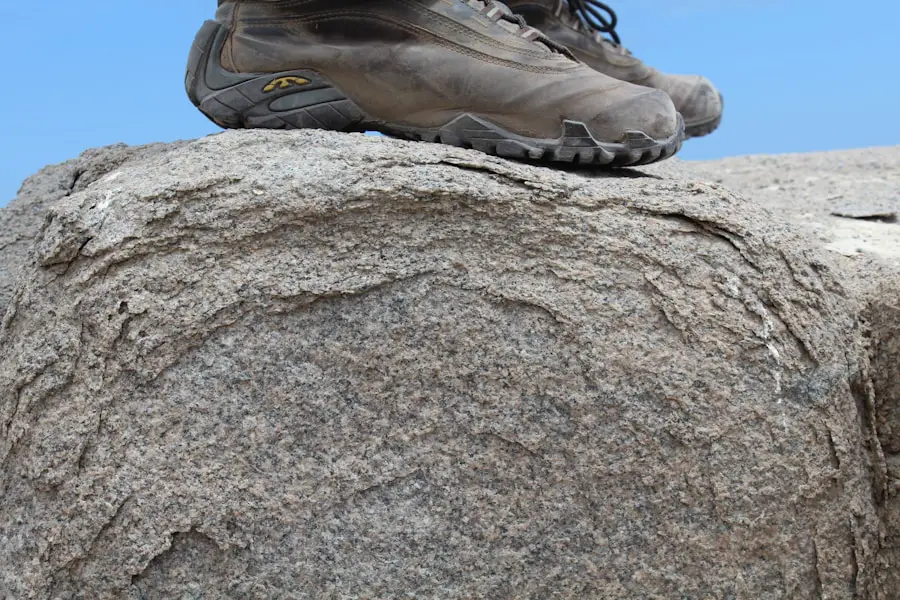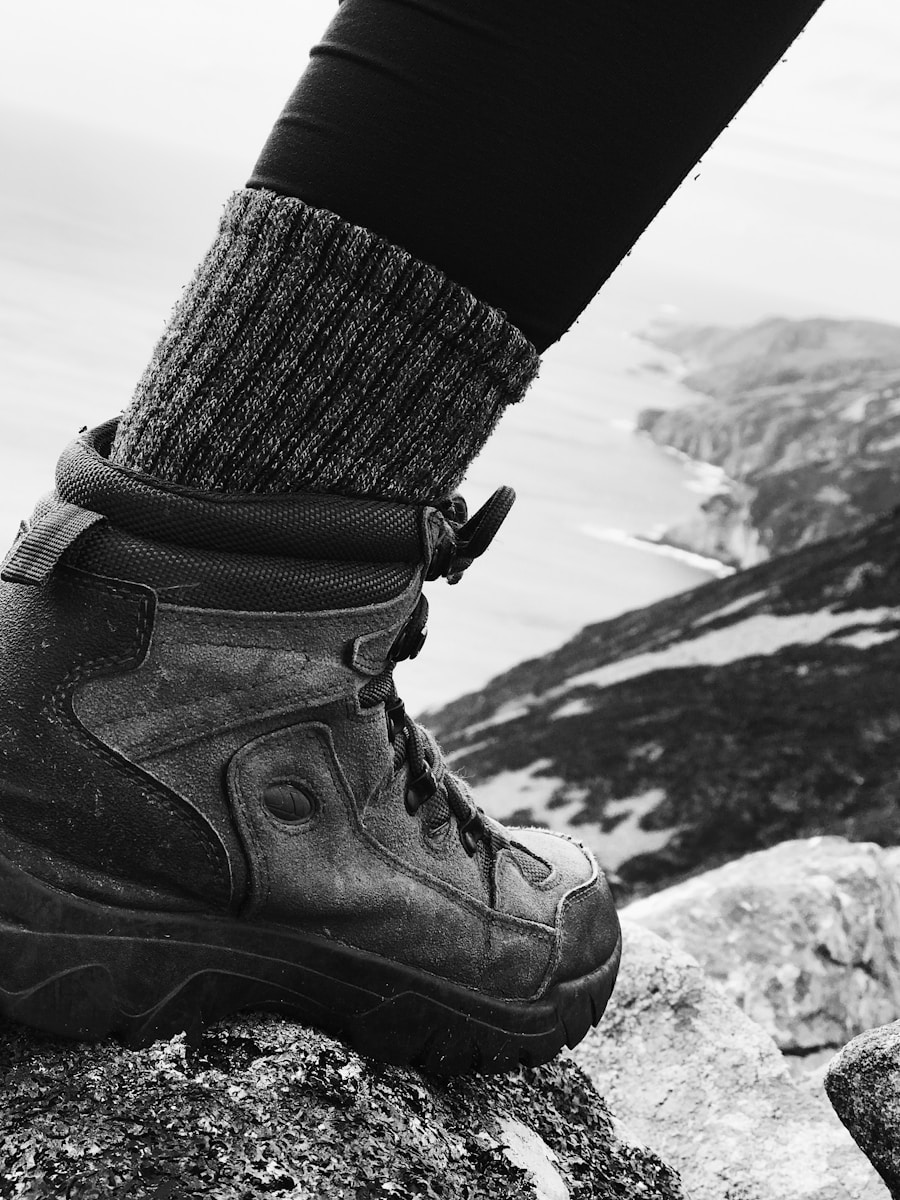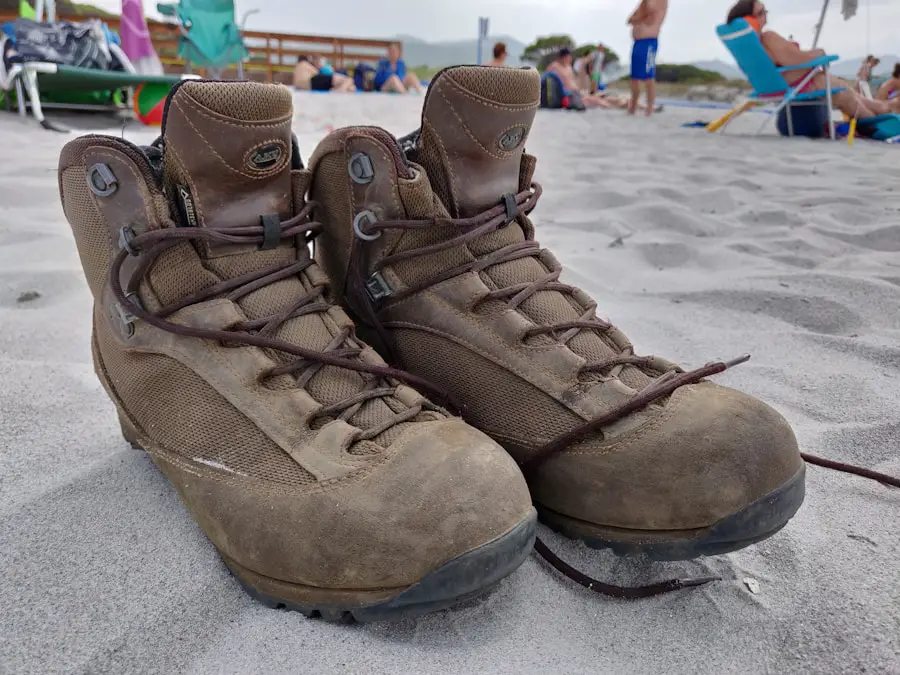When embarking on the quest for the perfect hiking boots, the first step is to delve into the world of brands and materials. The market is saturated with options, each boasting unique features and benefits. Renowned brands such as Merrell, Salomon, and Lowa have established themselves as leaders in the hiking boot industry, known for their durability, comfort, and performance.
Each brand often specializes in different types of hiking boots, catering to various terrains and hiking styles. For instance, Merrell is celebrated for its lightweight designs that are ideal for day hikes, while Lowa is recognized for its robust boots that excel in rugged conditions. In addition to brand reputation, understanding the materials used in hiking boots is crucial.
High-quality leather, synthetic fabrics, and Gore-Tex membranes are common materials that contribute to a boot’s performance. Leather offers durability and water resistance, making it a popular choice for long treks in challenging environments. On the other hand, synthetic materials tend to be lighter and dry faster, which can be advantageous for those who prioritize speed and agility on the trail.
Furthermore, waterproofing technologies like Gore-Tex provide an essential barrier against moisture, ensuring that feet remain dry during wet conditions. Researching these materials not only helps in selecting a boot that meets specific needs but also aids in understanding how different features can enhance overall hiking experiences.
Key Takeaways
- Researching the Best Brands and Materials is essential for finding the right hiking gear.
- Visiting Outdoor Retail Stores allows for hands-on exploration of different products.
- Checking Online Retailers and Reviews provides a wide range of options and customer feedback.
- Seeking Recommendations from Experienced Hikers can offer valuable insights and personal experiences.
- Attending Outdoor Gear Expos and Events allows for discovering new products and innovations in the industry.
Visiting Outdoor Retail Stores
Once a foundational understanding of brands and materials has been established, visiting outdoor retail stores becomes an invaluable next step. These stores often provide a tactile experience that online shopping cannot replicate. Walking into a store allows potential buyers to physically examine various models, assess their weight, and feel the materials firsthand.
This sensory engagement is particularly important when it comes to hiking boots, as comfort and fit are paramount. Many outdoor retailers have knowledgeable staff who can offer insights into the latest technologies and trends in hiking footwear, guiding customers toward options that align with their specific needs. Moreover, trying on boots in-store allows hikers to test for fit and comfort.
It is advisable to wear the same type of socks that will be used on hikes when trying on boots, as this can significantly affect the fit. Many stores also have inclines or ramps where customers can walk around to simulate hiking conditions. This experience can reveal how a boot performs under pressure and whether it provides adequate support for the ankles and arches.
Additionally, some retailers offer fitting services that analyze foot shape and gait, ensuring that customers find the best possible match for their foot type.
Checking Online Retailers and Reviews

In today’s digital age, online retailers have become a significant resource for purchasing hiking boots. Websites like REI, Amazon, and Backcountry not only offer a vast selection of products but also provide customer reviews that can be instrumental in making informed decisions. Reading through reviews allows potential buyers to gain insights from fellow hikers who have tested the boots in real-world conditions.
These reviews often highlight specific features such as comfort during long hikes, durability over time, and performance in various weather conditions. However, it is essential to approach online reviews with a discerning eye. While many reviews are genuine and helpful, some may be biased or overly critical based on individual experiences that may not apply universally.
It is beneficial to look for patterns in feedback rather than focusing solely on extreme opinions. Additionally, many online retailers offer detailed product descriptions that include specifications about weight, waterproofing capabilities, and intended use. This information can help narrow down choices based on personal hiking styles and preferences.
Seeking Recommendations from Experienced Hikers
| Trail Name | Difficulty Level | Distance (miles) | Elevation Gain (feet) |
|---|---|---|---|
| Appalachian Trail | Difficult | 2,190 | 464,464 |
| Pacific Crest Trail | Difficult | 2,653 | 57,000 |
| John Muir Trail | Moderate | 211 | 46,000 |
| Long Trail | Difficult | 272 | 69,000 |
One of the most effective ways to find reliable hiking boots is by seeking recommendations from experienced hikers. Engaging with local hiking communities or online forums can provide valuable insights into which brands and models perform best under specific conditions. Experienced hikers often have firsthand knowledge of how different boots hold up over time and can share their personal experiences regarding comfort levels during long treks or challenging terrains.
Moreover, participating in group hikes or outdoor meetups can facilitate conversations about gear preferences among fellow enthusiasts. These interactions not only foster camaraderie but also create opportunities to ask questions about specific models or brands that may not be widely known. Many seasoned hikers are eager to share their insights and may even allow others to try on their boots for a more personal evaluation of fit and comfort.
This communal approach to gear selection can lead to discovering hidden gems that might not be on mainstream radar.
Attending Outdoor Gear Expos and Events
Outdoor gear expos and events present an excellent opportunity for hikers to explore a wide array of products in one location. These gatherings often feature numerous vendors showcasing their latest innovations in hiking footwear alongside other outdoor gear. Attendees can interact directly with brand representatives who are knowledgeable about their products and can provide detailed information about features, benefits, and intended uses of various hiking boots.
Additionally, many expos offer workshops or presentations where experts discuss topics related to hiking gear, including how to choose the right footwear for different types of trails or conditions. This educational aspect can be invaluable for both novice and experienced hikers looking to enhance their understanding of what makes a good hiking boot. Furthermore, trying on boots at these events allows potential buyers to compare multiple brands side by side, making it easier to identify which models feel best on their feet.
Exploring Specialty Hiking and Outdoor Stores

While large outdoor retail chains offer a broad selection of products, specialty hiking stores often provide a more curated experience tailored specifically to outdoor enthusiasts. These stores typically focus exclusively on hiking gear and apparel, allowing them to stock a carefully selected range of high-quality brands that cater to serious hikers. The staff at specialty stores are often passionate about outdoor activities themselves and possess extensive knowledge about the products they sell.
Shopping at specialty stores also allows for personalized service that can significantly enhance the buying experience. Employees may take the time to understand individual needs and preferences before recommending specific models or brands. Additionally, many specialty stores offer fitting services that assess foot shape and gait analysis, ensuring that customers find the perfect fit for their hiking boots.
This level of attention can make a substantial difference in comfort during long hikes, as improperly fitted boots can lead to blisters or discomfort.
Consulting with Professional Hiking Guides
Professional hiking guides possess a wealth of knowledge about the best gear for various terrains and conditions based on their extensive experience leading groups through diverse landscapes. Consulting with these experts can provide invaluable insights into which hiking boots perform best under specific circumstances. Guides often have firsthand experience with different brands and models, allowing them to recommend options that have proven reliable over time.
Moreover, many guides emphasize the importance of comfort and fit when selecting hiking boots since they understand how critical these factors are during long excursions. They may also share tips on breaking in new boots or caring for them to extend their lifespan. Engaging with professional guides not only aids in selecting the right footwear but also enhances overall hiking experiences by providing access to expert advice on trail conditions and safety.
Considering Custom-Made Hiking Boot Options
For those with unique foot shapes or specific requirements that off-the-shelf options cannot accommodate, custom-made hiking boots present an excellent alternative. Several companies specialize in creating bespoke footwear tailored to individual needs, ensuring an optimal fit that enhances comfort during hikes. The process typically involves taking precise measurements of the feet and considering factors such as arch height and width.
Custom-made boots often utilize high-quality materials similar to those found in premium brands but are designed specifically for the wearer’s foot structure. This personalized approach can significantly reduce the risk of blisters or discomfort during long hikes, making them an appealing option for avid hikers who spend extended periods on the trail. While custom options may come at a higher price point than standard models, many hikers find the investment worthwhile for the enhanced comfort and performance they provide.
In conclusion, finding the right hiking boots involves a multifaceted approach that combines research, hands-on experience, community engagement, expert advice, and consideration of custom options. By exploring various avenues such as brand research, retail visits, online reviews, recommendations from experienced hikers, attendance at expos, specialty store exploration, consultations with professional guides, and custom solutions, hikers can make informed decisions that enhance their outdoor adventures significantly.
If you are looking for hiking boots, you may also be interested in finding the best sleeping bag for backpacking travel. A good sleeping bag is essential for staying warm and comfortable during your outdoor adventures. Check out this article on the best sleeping bag for backpacking travel to ensure you are well-prepared for your next hiking trip.
Love travel? Join Our Facebook Community For More Tips.
FAQs
What are hiking boots?
Hiking boots are specialized footwear designed for outdoor activities such as hiking, trekking, and mountaineering. They are designed to provide support, stability, and protection for the feet and ankles during outdoor adventures.
Where can I buy hiking boots?
Hiking boots can be purchased at outdoor retail stores, specialty hiking and camping stores, department stores, and online retailers. Many popular outdoor brands offer a wide range of hiking boots for different types of terrain and activities.
What should I look for when buying hiking boots?
When buying hiking boots, it’s important to consider factors such as fit, support, traction, waterproofing, and durability. It’s also important to try on different styles and brands to find the best fit for your feet and the type of hiking you plan to do.
How do I know if hiking boots fit properly?
Properly fitting hiking boots should feel snug but not too tight, with enough room to wiggle your toes. Your heel should not lift up when walking, and there should be no pressure points or areas of discomfort. It’s recommended to try on hiking boots with the socks you plan to wear while hiking.
What are the different types of hiking boots?
There are three main types of hiking boots: hiking shoes (low-cut), hiking boots (mid-cut), and backpacking boots (high-cut). Hiking shoes are lightweight and flexible, while backpacking boots offer more support and stability for carrying heavier loads over rugged terrain.
How do I care for hiking boots?
To prolong the life of your hiking boots, it’s important to clean them regularly, remove dirt and debris, and allow them to air dry. Waterproofing treatments can also be applied to maintain water resistance. Additionally, storing hiking boots in a cool, dry place can help prevent deterioration.
